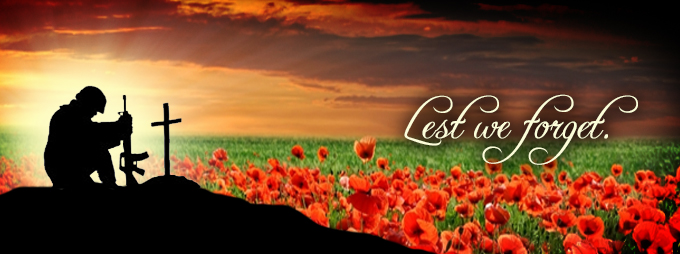
Remembrance Day (also known as Poppy Day or Armistice Day) is a memorial day observed in Commonwealth countries since the end of World War I to remember the members of their armed forces who have died in the line of duty. This day, or alternative dates, are also recognised as special days for war remembrances in many non-Commonwealth countries.
Remembrance Day is observed on 11th November to recall the end of hostilities of World War I on that date in 1918. Hostilities formally ended “at the 11th hour of the 11th day of the 11th month,” in accordance with the Armistice, signed by representatives of Germany and the Entente between 5:12 and 5:20 that morning (“At the 11th hour” refers to the passing of the 11th hour, or 11:00am). World War I officially ended with the signing of the Treaty of Versailles on 28 June 1919.
In many parts of the world, people observe two consecutive minutes of silence at 11am local time as a sign of respect in the first minute for the roughly 20 million people who died in the war, and in the second minute dedicated to the living left behind, generally understood to be wives, children and families who remained but were deeply affected by the conflict. This gesture of respect was suggested by Edward George Honey in a letter to a British newspaper, although Wellesley Tudor Pole had established two ceremonial periods of remembrance based on events in 1917.
The day was specifically dedicated by King George V on 7th November 1919 as a day of remembrance for members of the armed forces who were killed during World War I. The Initial or Very First Armistice Day was held at Buckingham Palace commencing with King George V hosting a “Banquet in Honour of The President of the French Republic” during the evening hours of 10th November 1919. The First Official Armistice Day was subsequently held on the Grounds of Buckingham Palace on the Morning of 11th November 1919. This would set the trend for a day of Remembrance for decades to come.
In the United Kingdom, beginning in 1939, the two-minute silence was moved to the Sunday nearest to 11th November in order not to interfere with wartime production should 11th November fall on a weekday. After the end of World War II, most Armistice Day events were moved to the nearest Sunday and began to commemorate both World Wars. The change was made in many Commonwealth countries, as well as the United Kingdom, and the new commemoration was named Remembrance Sunday or Remembrance Day. Both Armistice Day and Remembrance Sunday are now commemorated formally in the UK. In recent years Armistice Day has become increasingly recognised, and many people now attend the 11am ceremony at the Cenotaph in London – an event organised by The Western Front Association, a UK charity dedicated to perpetuating the memory of those who served in the First World War.
The red remembrance poppy has become a familiar emblem of Remembrance Day due to the poem “In Flanders Fields” written by Lieutenant Colonel John McCrae on the 3rd May 1915. These poppies bloomed across some of the worst battlefields of Flanders in World War I, their brilliant red colour an appropriate symbol for the blood spilled in the war.
Lest we forget.
In Flanders fields the poppies blow
Between the crosses, row on row,
That mark our place; and in the sky
The larks, still bravely singing, fly
Scarce heard amid the guns below.
We are the Dead. Short days ago
We lived, felt dawn, saw sunset glow,
Loved and were loved, and now we lie
In Flanders fields.
Take up your quarrel with the foe:
To you from failing hands we throw
The torch; be yours to hold it high.
If ye break faith with us who die
We shall not sleep, though poppies grow
In Flanders fields.
Remembering all the Closes who died whilst on Active Service throughout the centuries of war:
And now for a bit of housekeeping
See the wood and the trees
We publish everything we have in our fabulous trees, so basically if you can’t find it, we don’t have it. With over 20,000 people, 5,000 families, 12,000 sources, and 69,000 image references currently sat in our database, you’ll appreciate the amount of work that has gone into this over the years.
You can see more in the Close Ancestry Trees.
Donations
We know that everyone in the world is after your hard-earned cash, but if you do feel a donation coming on as a result of your visit here, then please feel free to send it our way. It all goes towards the upkeep of the site, for which we charge absolutely nothing. So, please help us to keep the site free to use. Thanks.
Contacting us
If you find anything that you think may be of interest to us, then drop us an email at stuff@closeancestry.com
Get these updates directly to your inbox
All our updates are also published to my Twitter feed, @PoetClose. So, you can follow me there … if you really have nothing better to do.
